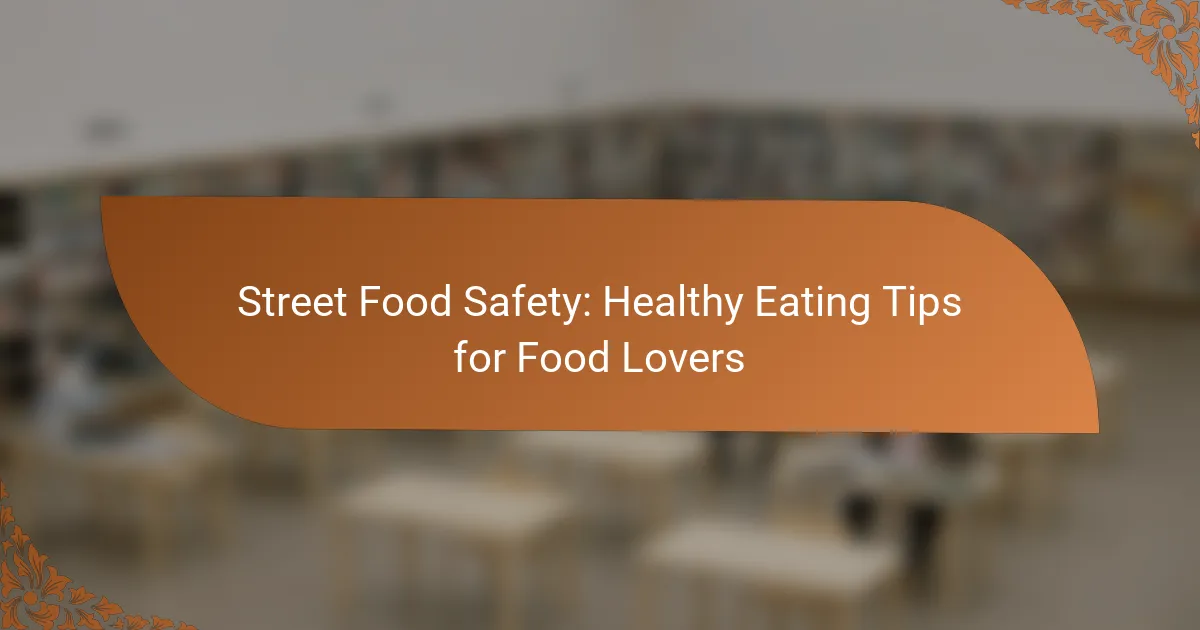Street food offers a delightful culinary experience, but it’s essential to prioritize safety while indulging. By choosing vendors who maintain high hygiene standards and serve freshly prepared meals, you can enjoy delicious bites without compromising your health. Being aware of potential risks and making informed choices will help you savor the vibrant flavors of street food safely.
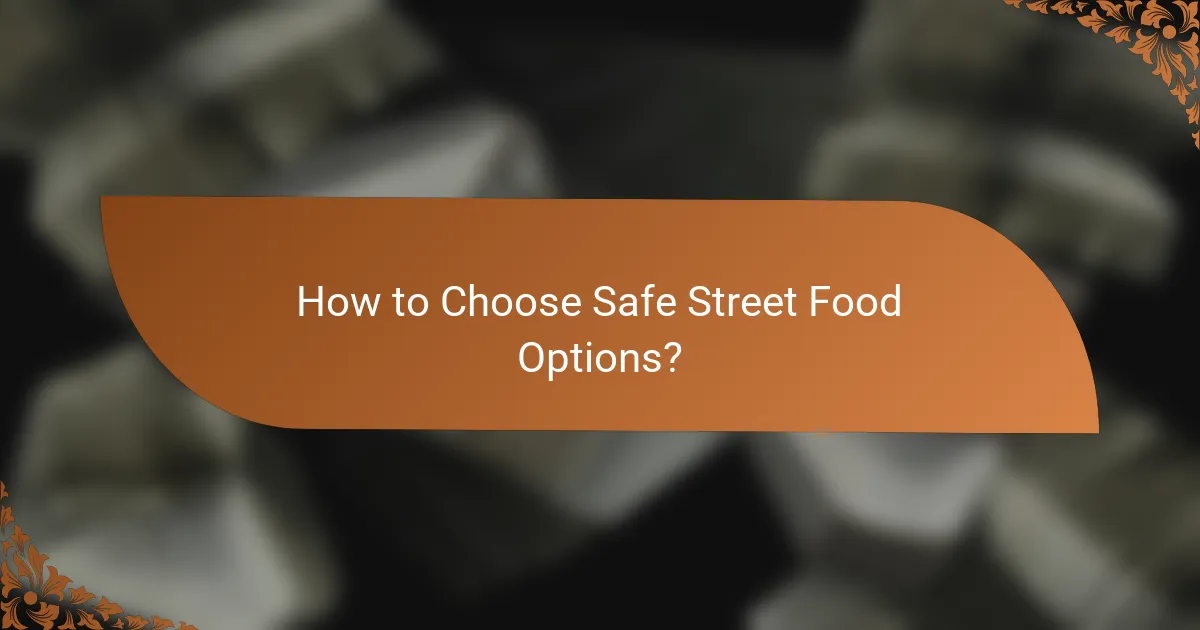
How to Choose Safe Street Food Options?
Choosing safe street food options involves being observant and selective. Prioritize vendors who demonstrate good hygiene and food safety practices to ensure a healthier eating experience.
Look for busy vendors
Busy vendors often indicate popularity and trust among customers, which can be a good sign of food safety. A high turnover means food is likely fresher and less likely to sit out for extended periods.
When selecting a vendor, observe the crowd. If a stall has a long line, it may suggest that the food is not only tasty but also safe, as many people are willing to eat there.
Check food handling practices
Good food handling practices are crucial for safety. Look for vendors who wear gloves, use utensils, and keep their work areas clean.
Pay attention to how food is stored and served. Vendors should avoid touching ready-to-eat foods with bare hands and should use clean containers to prevent contamination.
Assess food freshness
Freshness is key to safe street food. Observe the appearance and smell of the food; it should look appetizing and not have any off odors.
Ask vendors about the preparation time. Foods that have been cooked recently are generally safer than those that have been sitting out for a while.
Observe cooking temperatures
Cooking temperatures are essential for killing harmful bacteria. Hot foods should be steaming and served at temperatures above 60°C (140°F).
If you see food being cooked in front of you, ensure it reaches the appropriate temperature. Cold foods should be kept below 5°C (41°F) to prevent spoilage.
Read reviews and ratings
Online reviews and ratings can provide insights into a vendor’s reputation. Look for feedback regarding food safety and hygiene practices from previous customers.
Websites and apps that specialize in food reviews often highlight vendors with good safety records. Check for recent reviews to ensure the information is current.
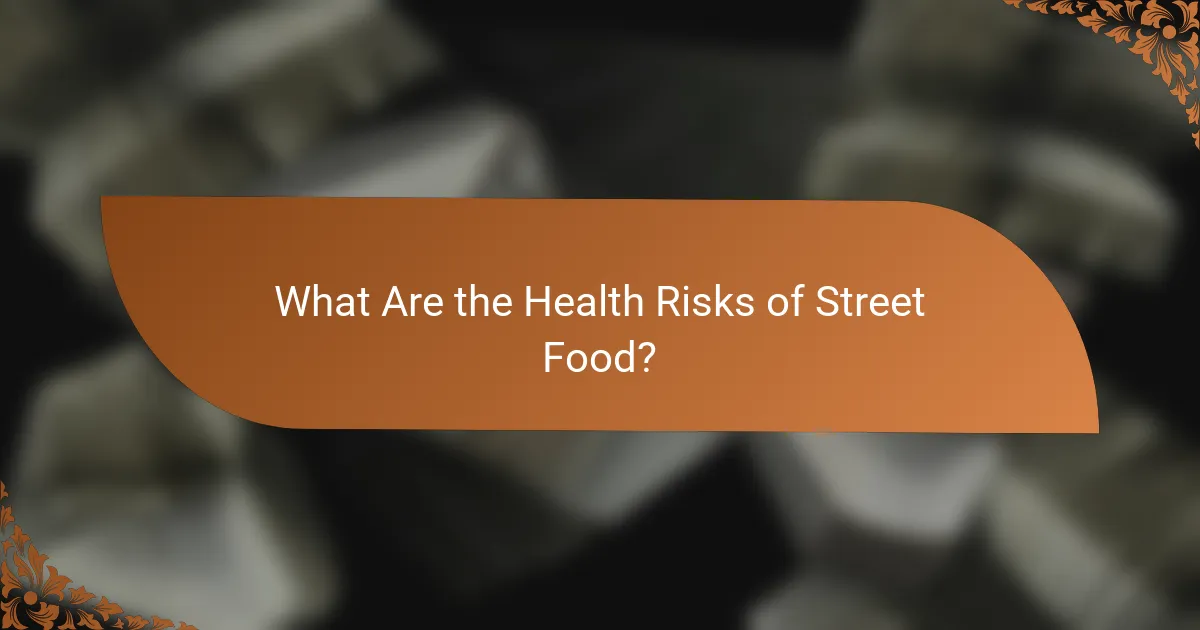
What Are the Health Risks of Street Food?
Street food can pose several health risks, primarily due to improper handling and unsanitary conditions. Consumers should be aware of these risks to make informed choices when enjoying street food.
Foodborne illnesses
Foodborne illnesses are a significant concern when consuming street food, as they can result from bacteria, viruses, or parasites present in contaminated food. Common symptoms include nausea, vomiting, diarrhea, and abdominal pain, which can vary in severity.
To minimize the risk of foodborne illnesses, choose vendors that cook food thoroughly and serve it hot. Avoid raw or undercooked items, especially meats and seafood, and be cautious with foods that have been sitting out for extended periods.
Contamination from unclean environments
Unclean environments can lead to contamination of street food, making it unsafe to eat. Vendors may operate in areas where hygiene practices are lacking, leading to exposure to harmful pathogens.
When selecting a street food vendor, look for those with clean cooking areas and proper food storage. Observing the vendor’s personal hygiene and the cleanliness of utensils can also provide insight into the safety of the food being offered.
Allergic reactions
Allergic reactions can occur when consuming street food, especially if ingredients are not clearly labeled or disclosed. Common allergens include nuts, shellfish, and gluten, which can trigger severe responses in sensitive individuals.
To avoid allergic reactions, communicate your dietary restrictions clearly to the vendor and inquire about ingredient lists. If you’re unsure about the contents of a dish, it’s best to opt for something else to prevent potential health risks.
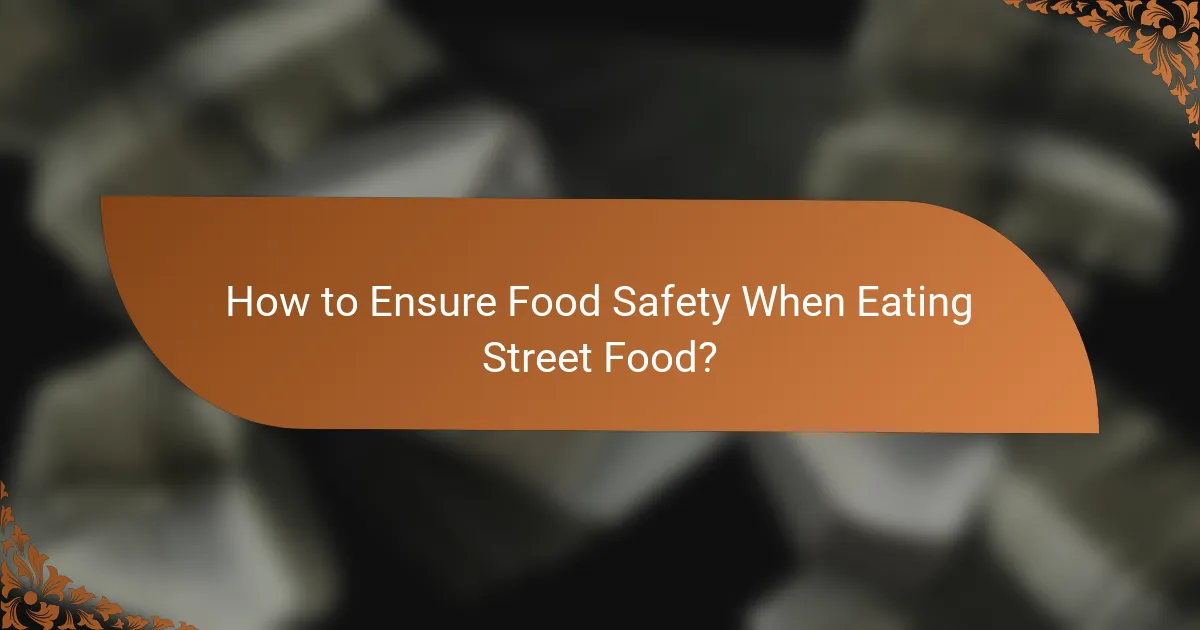
How to Ensure Food Safety When Eating Street Food?
To ensure food safety when enjoying street food, focus on selecting vendors that prioritize hygiene and serve freshly prepared meals. Being mindful of what you eat and how it is prepared can significantly reduce the risk of foodborne illnesses.
Choose cooked-to-order meals
Selecting cooked-to-order meals is one of the best ways to ensure food safety. These dishes are prepared fresh, which minimizes the time food spends at unsafe temperatures. Look for vendors who cook food in front of you, allowing you to see the preparation process.
Examples of cooked-to-order options include grilled meats, stir-fried dishes, and fresh seafood. These meals not only taste better but also reduce the risk of contamination from pre-cooked items that may have been sitting out for too long.
Avoid raw or undercooked items
Raw or undercooked foods can pose significant health risks, particularly in street food settings. Items like sushi, salads, and undercooked meats may harbor harmful bacteria or parasites. It’s best to avoid these options unless you are confident in the vendor’s food handling practices.
When in doubt, opt for fully cooked items. For instance, choose grilled vegetables over salads or fried snacks instead of raw fish. This simple choice can help safeguard your health while enjoying street food.
Use hand sanitizer before eating
Using hand sanitizer before eating street food is a crucial step in maintaining food safety. Many street vendors may not have access to clean water for handwashing, increasing the risk of contamination. A good hand sanitizer can effectively kill germs and bacteria that may be present on your hands.
Choose a hand sanitizer with at least 60% alcohol content for maximum effectiveness. Apply it thoroughly before handling food, especially if you are eating with your hands. This small action can significantly reduce your risk of foodborne illnesses while enjoying your favorite street delicacies.
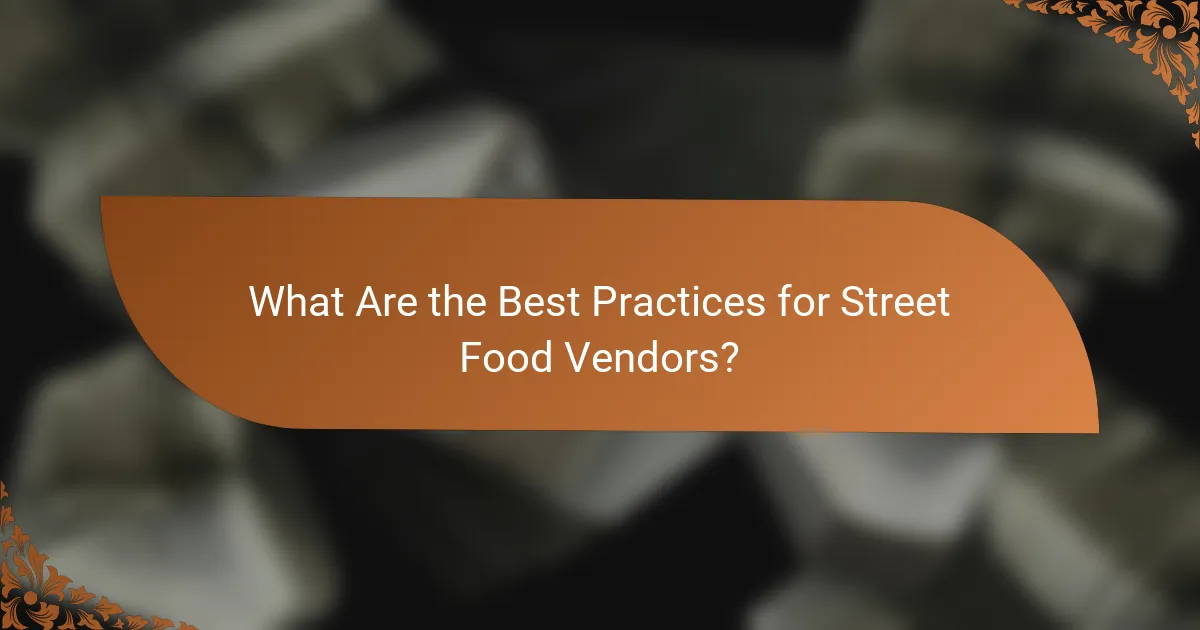
What Are the Best Practices for Street Food Vendors?
Street food vendors can ensure safety and quality by adhering to best practices that prioritize hygiene, food storage, and staff training. Implementing these practices not only protects customers but also enhances the vendor’s reputation and business sustainability.
Maintain hygiene standards
Maintaining hygiene standards is crucial for street food vendors to prevent foodborne illnesses. Vendors should regularly wash their hands, use gloves when handling food, and keep cooking areas clean and sanitized.
Additionally, food preparation surfaces should be disinfected frequently, and utensils must be stored properly to avoid contamination. Vendors should also ensure that food is covered to protect it from pests and environmental contaminants.
Use safe food storage techniques
Safe food storage techniques are essential for preserving food quality and preventing spoilage. Vendors should store perishable items at temperatures below 5°C (41°F) and ensure that cooked foods are kept hot, ideally above 60°C (140°F).
Using proper containers that are airtight and labeled can help maintain freshness and prevent cross-contamination. Regularly checking expiration dates and rotating stock can further enhance food safety.
Train staff on food safety
Training staff on food safety is vital for ensuring that all team members understand and implement best practices. Vendors should provide regular training sessions covering topics such as hygiene, safe food handling, and emergency procedures.
Encouraging staff to stay informed about local health regulations and food safety standards can help maintain compliance and foster a culture of safety. Regular assessments and feedback can also reinforce these practices among the team.

How to Identify Quality Ingredients in Street Food?
To identify quality ingredients in street food, look for freshness and local sourcing, as these factors often indicate better taste and safety. Prioritizing vendors who emphasize high-quality ingredients can enhance your eating experience and minimize health risks.
Look for local and fresh produce
Fresh, local produce is a key indicator of quality in street food. Vendors who source their ingredients from nearby farms are more likely to offer seasonal items that are ripe and flavorful. Look for vibrant colors and firm textures in fruits and vegetables, which suggest they are fresh.
Additionally, consider the time of day when you purchase street food. Early morning or lunchtime often yields fresher options, as vendors are likely to have just restocked their supplies. Avoid stalls that have ingredients sitting out for extended periods, as this may indicate lower quality.
Ask about ingredient sourcing
Inquiring about where ingredients come from can provide valuable insight into the quality of street food. Many reputable vendors are proud to share information about their suppliers and may even display certifications or local partnerships. This transparency can help you feel more confident in your food choices.
When asking about sourcing, consider specific questions such as whether the meat is locally sourced or if the produce is organic. Vendors who prioritize quality will often be eager to discuss their practices, while those who hesitate may not meet the same standards.
